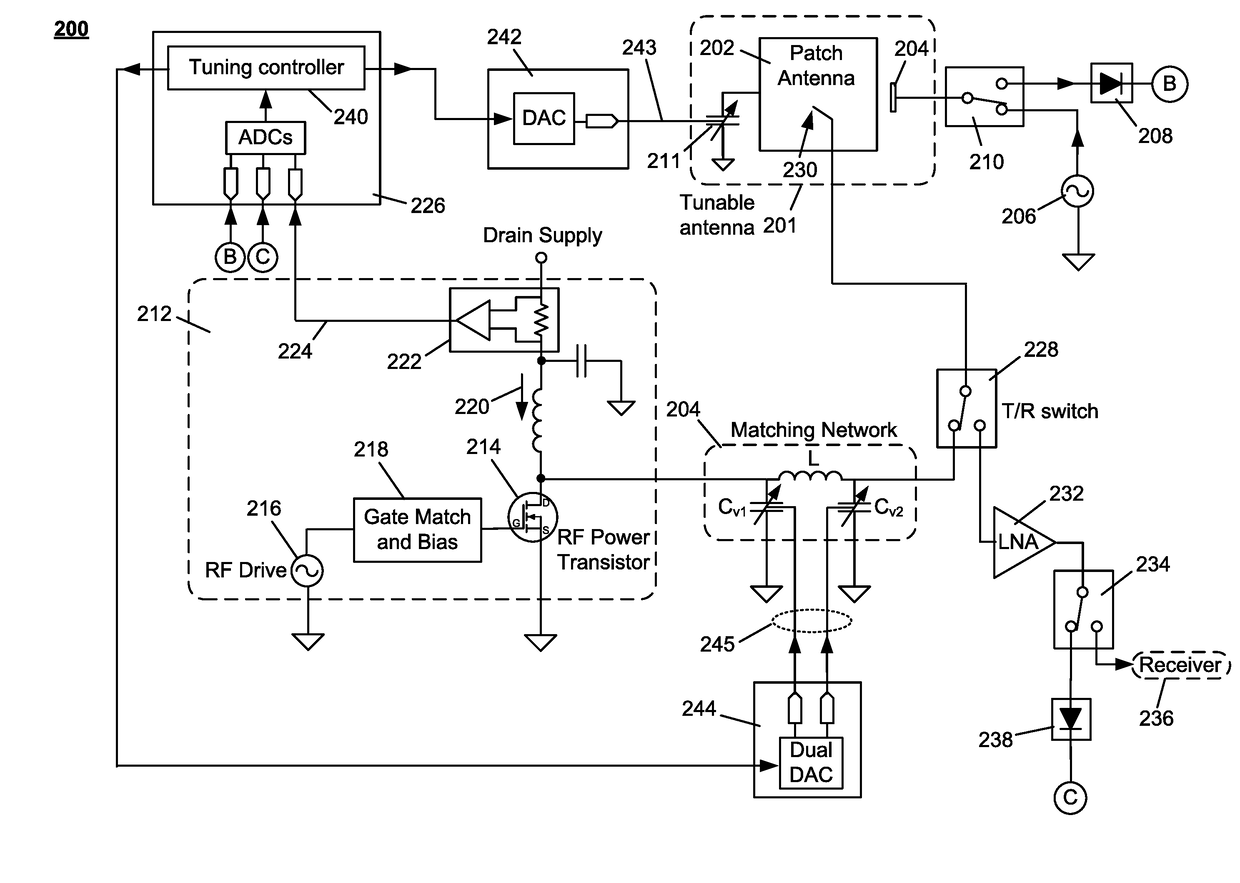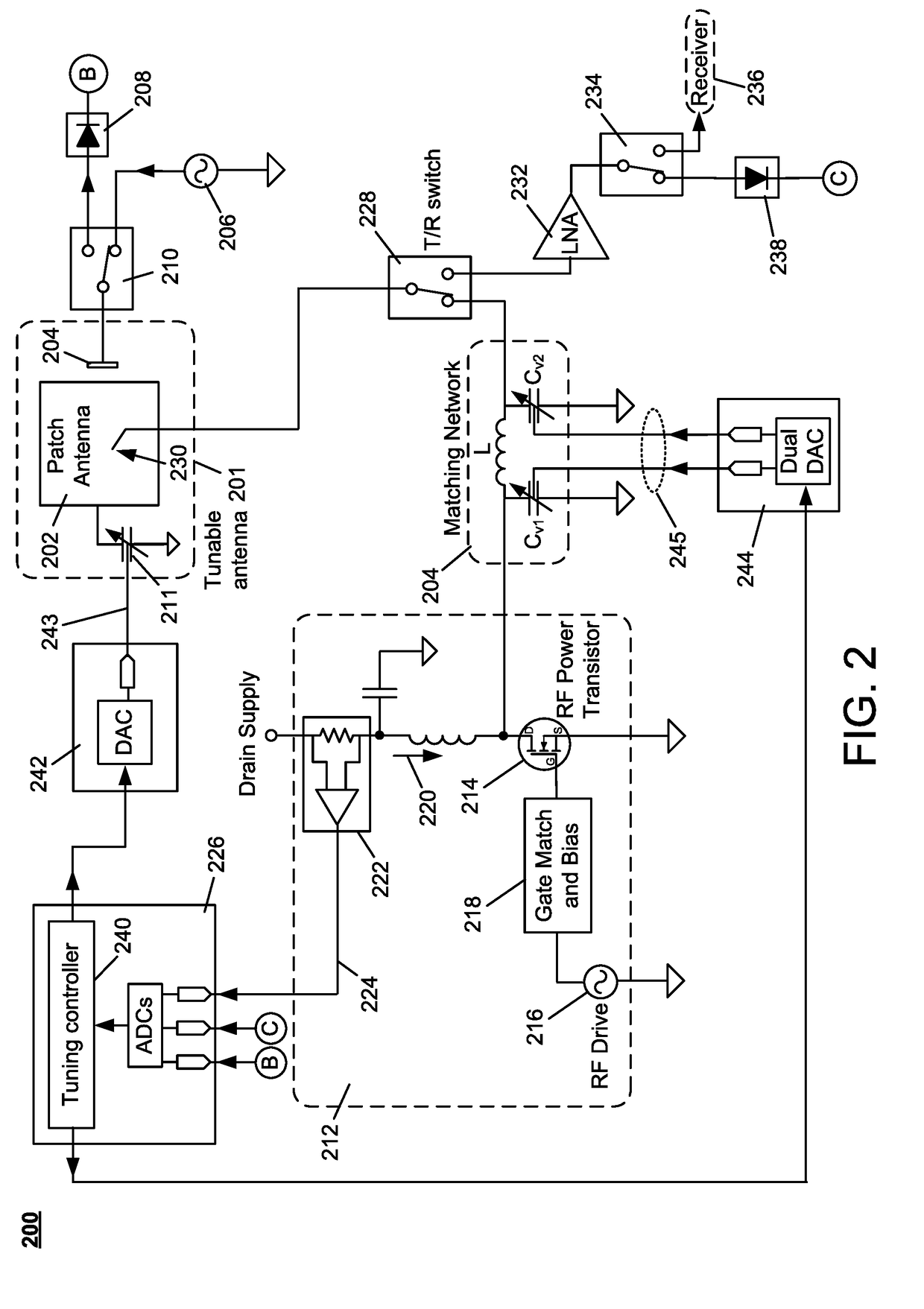Transceiver System To Adapt to Antenna De-Tuning
a technology of transceiver and antenna, applied in the direction of transmitter monitoring, electrical equipment, transmission monitoring, etc., can solve the problems of large loss, and achieve the effect of reducing loss, improving performance, and improving performan
- Summary
- Abstract
- Description
- Claims
- Application Information
AI Technical Summary
Benefits of technology
Problems solved by technology
Method used
Image
Examples
Embodiment Construction
[0030]A description of example embodiments of the invention follows.
[0031]The teachings of all patents, published applications and references cited herein are incorporated by reference in their entirety.
[0032]FIG. 1 illustrates a block diagram of a conventional transceiver system 100, with a tunable matching network 102, configured to monitor and minimize reflected power. Elements of the tunable matching network 102 are electrically manipulated by a tuning controller 104 to present a specific impedance (e.g., 50Ω) to the transmitter 106 and the receiver 108 of the transceiver system 100, while compensating for impedance variations at the antenna feedpoint due to antenna detuning effects. The tuning controller 104 generates the control signals 110 based on forward and reverse power, sensed by RF detectors 112, of propagating RF energy coupled from the RF path by a dual directional coupler 114. The tuning controller manipulates the elements of the matching network 102, through the con...
PUM
 Login to View More
Login to View More Abstract
Description
Claims
Application Information
 Login to View More
Login to View More - R&D
- Intellectual Property
- Life Sciences
- Materials
- Tech Scout
- Unparalleled Data Quality
- Higher Quality Content
- 60% Fewer Hallucinations
Browse by: Latest US Patents, China's latest patents, Technical Efficacy Thesaurus, Application Domain, Technology Topic, Popular Technical Reports.
© 2025 PatSnap. All rights reserved.Legal|Privacy policy|Modern Slavery Act Transparency Statement|Sitemap|About US| Contact US: help@patsnap.com



